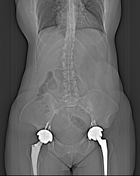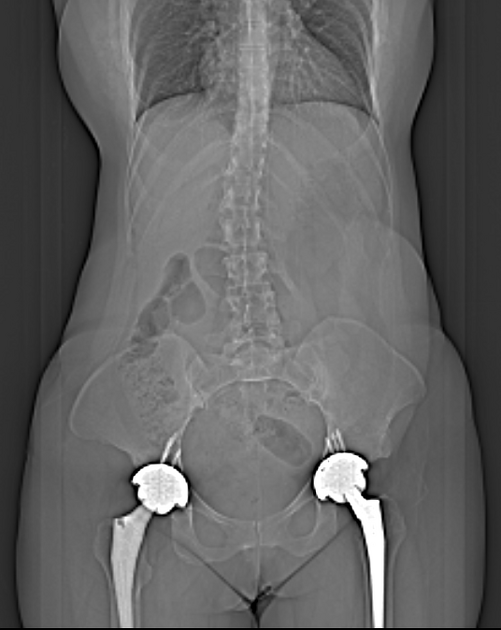Presentation
Abdominal pain. Work up for the urinary tract stone.
Patient Data




Post-operative changes and evidence of total arthroplasty are seen in both hip joints. Due to the prosthesis's severe beam hardening and streaking artifact, the evaluation of the lower pelvis is suboptimal.
An 8 mm small hypodense lesion is seen in the 6th hepatic segment, most consistent with the cyst.
Case Discussion
Beam hardening occurs when an x-ray beam of polychromatic energies passes through an object, resulting in selective attenuation of lower energy photons and only higher energy photons are left to contribute to the beam; thus, the mean beam energy is increased and hardened.
Metal artifact reduction (MAR) algorithms are used to improve CT image quality in patients with metalware; however, they can be affected by novel artifacts.




 Unable to process the form. Check for errors and try again.
Unable to process the form. Check for errors and try again.